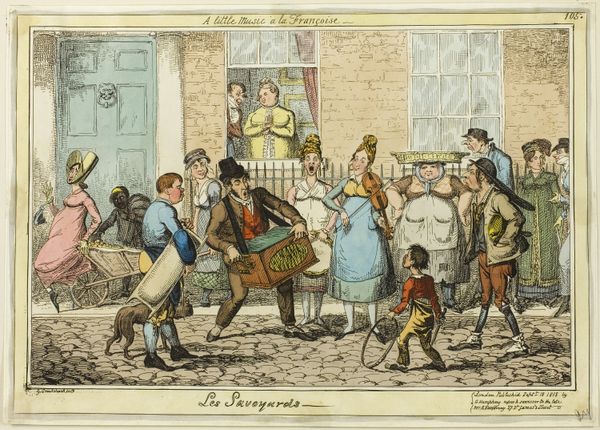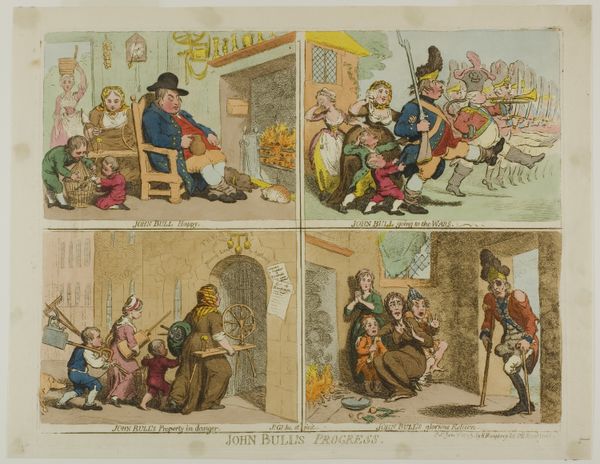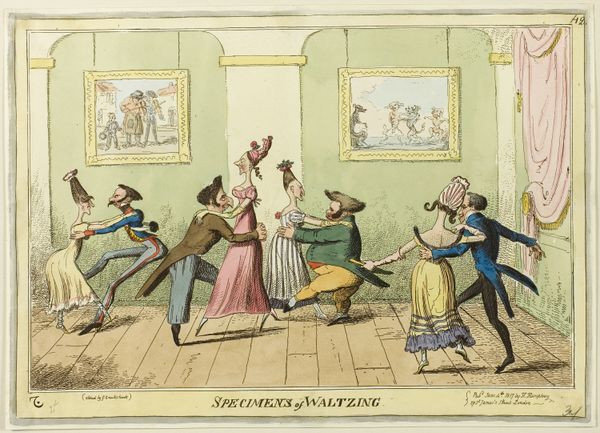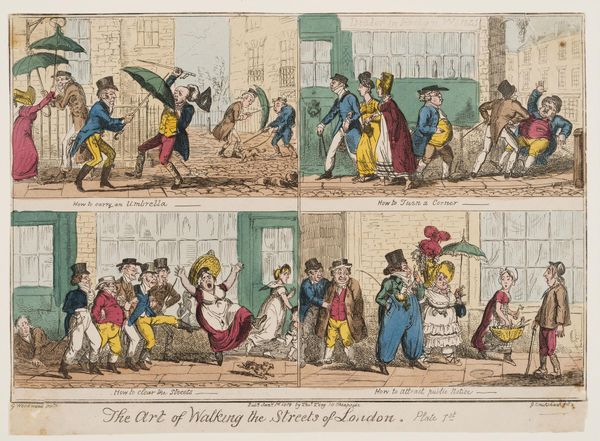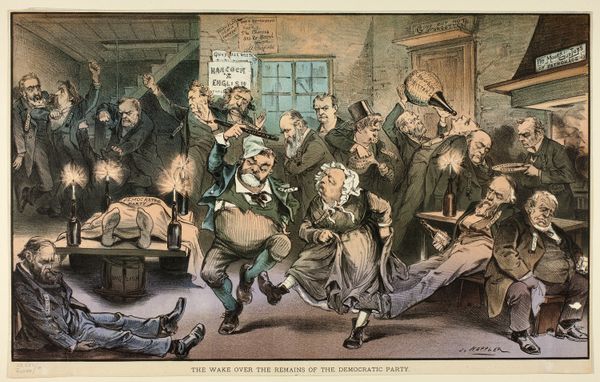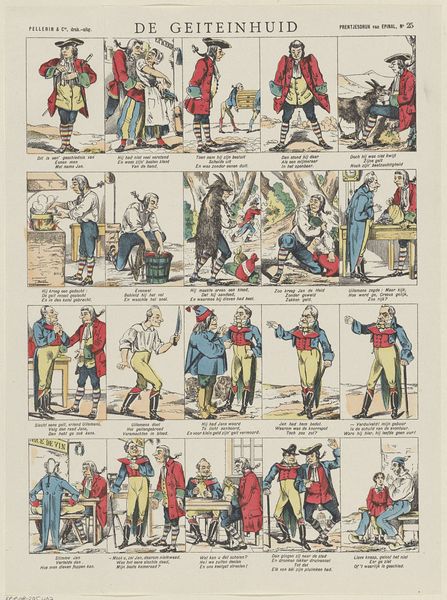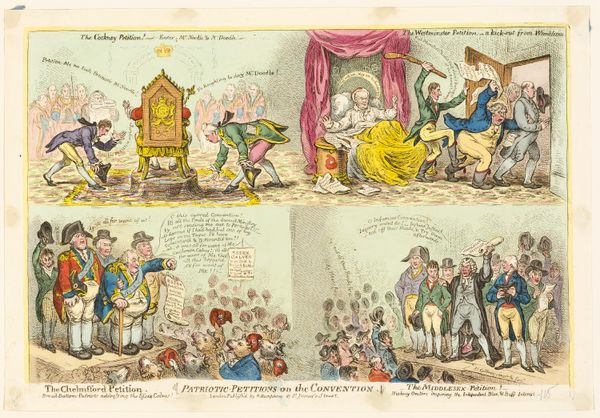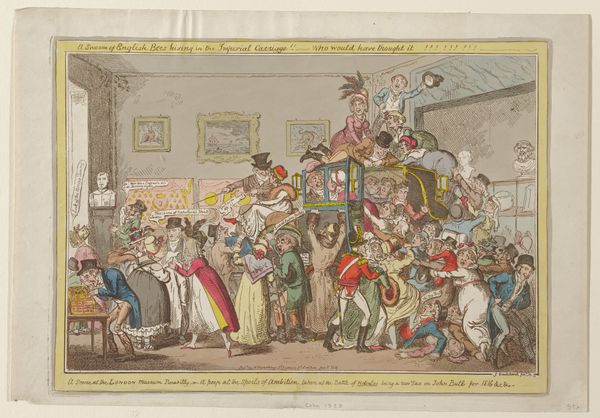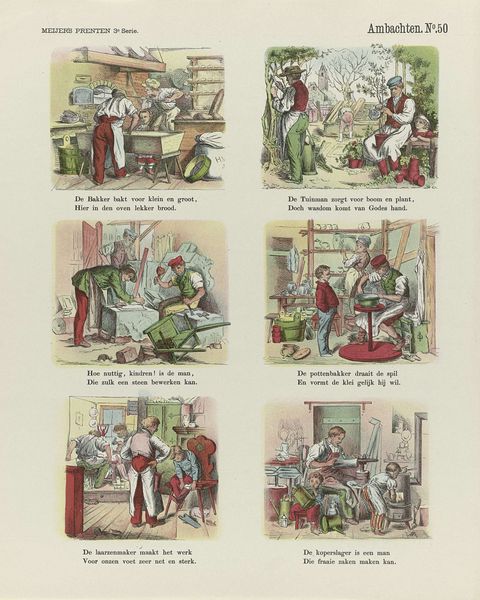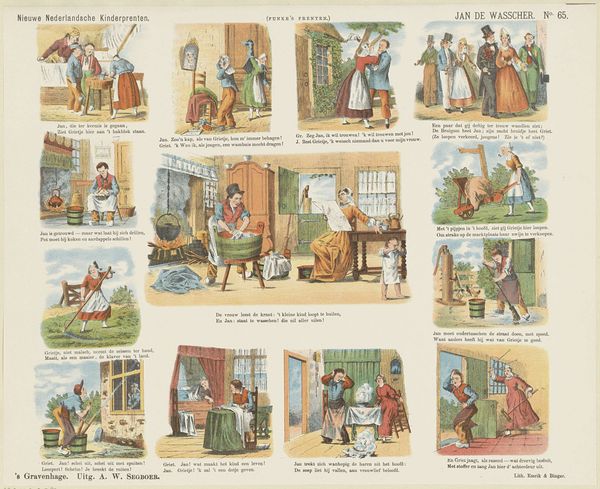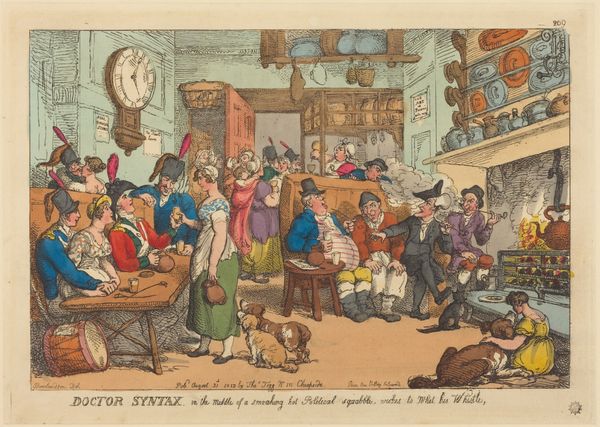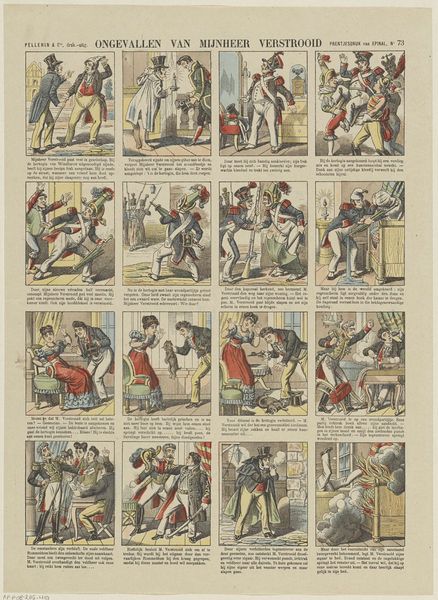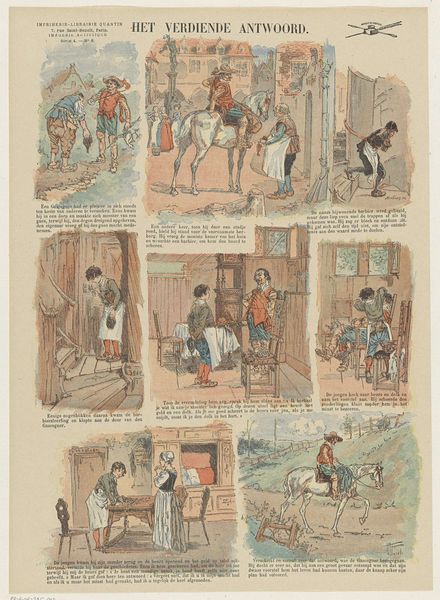
drawing, coloured-pencil, print, etching, paper
#
drawing
#
coloured-pencil
#
narrative-art
# print
#
etching
#
caricature
#
paper
#
coloured pencil
#
romanticism
#
genre-painting
#
history-painting
Dimensions: 265 × 395 mm (image); 272 × 401 mm (plate); 276 × 407 mm (sheet)
Copyright: Public Domain
Curator: George Cruikshank, a popular British caricaturist, likely created this coloured-pencil drawing titled "The Sailor’s Progress" around 1819. It’s a fascinating commentary. What strikes you about it at first glance? Editor: There's an undeniable energy, chaotic and vibrant! Six panels depict different stages in what seems like a sailor's career. It reads almost like a morality tale. Do we get the sense it celebrates the navy or satirizes it? Curator: Good question. While Cruikshank did patriotic work, this piece utilizes symbolic imagery that seems to complicate simple celebrations. Notice how each stage diminishes the sailor? The initial heroic boarding fades into drunkenness and domestic disruption. The trajectory suggests moral decay. Consider how drink, presented as carousing initially, ultimately results in degradation. Is this not reflective of social challenges of the time? Editor: Absolutely. This reflects a crucial moment in British history, right after the Napoleonic Wars. Massive demobilization led to unemployment, poverty, and social unrest, impacting ordinary sailors directly. So, the iconography of decline is apt, indicting a system that uses and discards its people. The bright colours and jaunty scenes mask deeper critiques. The 'progress' seems ironically named. Curator: The composition underscores the decline as well. There's less dynamic movement in each panel. It is true of caricatures, especially popular ones. Perhaps they allow commentary that directly berating the Navy would not? Editor: The "progress" is echoed even in the composition of the page itself. At first the action feels crowded. Later, it almost collapses inwards. I’m intrigued, too, by what's missing. The horrors of actual naval combat are sidelined. Focus shifts to social impact, or rather, its portrayal of moral failures, economic instability, domestic chaos after the sailor’s return... Curator: Indeed, it speaks to larger themes than mere nautical experience; this invites viewers to reflect on broader social issues still. Editor: Right, art becomes a tool for exposing difficult truths, making it as relevant today. Thank you for drawing out those insights. Curator: My pleasure. It's enriching to unpack historical narratives woven within visual storytelling like this.
Comments
No comments
Be the first to comment and join the conversation on the ultimate creative platform.
